A flash of color in the treetops. An intricate song emerging from the willows. The shriek of a raptor soaring high in the sky. Birds are all around us! If you take a moment to stop, look, and listen, you’ll begin to hear them rustling in shrubs, see their quick flights between trees, and pick up on their small chirps.
With more than 169 species of birds spotted at the Land Trust protected Camp Polk Meadow Preserve, we can’t share all of the birds of Central Oregon with you! Here are seven that are sure to delight and surprise you:
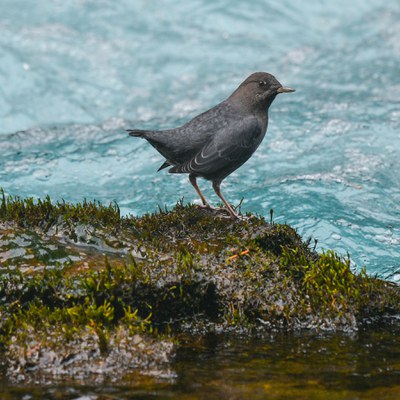
Length: 7.5 inches
Wingspan: 11 inches
Habitat: Fast flowing, rocky streams
Did you know that Central Oregon has a songbird that walks under water?!? American dippers can be spotted on boulders and downed logs next to or in streams, bobbing their body up and down (hence the name dipper). This is the telltale sign of the bird, as its dark gray plumage is not as identifying. American dippers feed on aquatic larvae, which they find underwater in clear, whitewater streams.
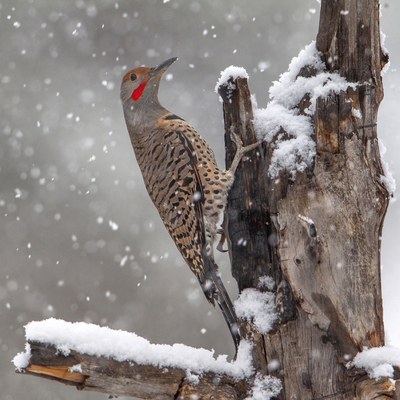
Length: 12.5 inches
Wingspan: 20 inches
Habitat: Open woodlands
This is an easy one to spot around town! Northern flickers have a slim head, slightly curved bill, white rump, and a long tail that tapers to a point. Their plumage is striking with a brown body patterned with black spots, bars, and crescents. The underside of their wing and tail feathers are a rosy red. Males have a bright red mustache stripe. Northern flickers mainly eat ants and beetles and, because of this, are often spotted on the ground as they forage. They use their long, barbed tongue to lick up their meals.
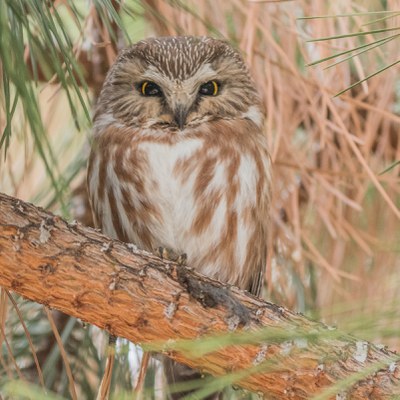
Length: 8 inches
Wingspan: 17 inches
Habitat: Wooded areas with an open understory
These small owls, weighing 2.8 ounces, have oversized heads and bright yellow eyes. Adults have wide brown vertical streaks on their chests, white spots on their shoulders, and a prominent white “V” on their face. Their main prey is mice, which they typically eat in pieces over two days. Northern saw-whet owls are highly nocturnal and seldom seen as they roost in dense conifers during the day.
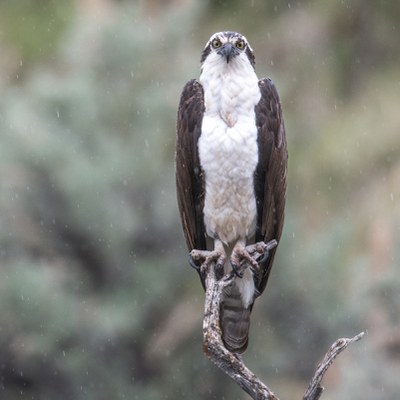
Length: 23 inches
Wingspan: 63 inches
Habitat: Near rivers and ponds
Keep a lookout for osprey when you’re near water! These birds eat fish (making up 99% of their diet) and even have barbed pads to help them hold onto their slippery prey. Several studies have shown that it takes an osprey on average 12 minutes before they successfully catch a fish. Osprey have a distinctive, long, crooked wing shape while soaring and a white underside that you can see in flight. Their nests are a bulky group of sticks in dead trees or other supports (you’ll often see them in their nests on platforms along Hwy 97).
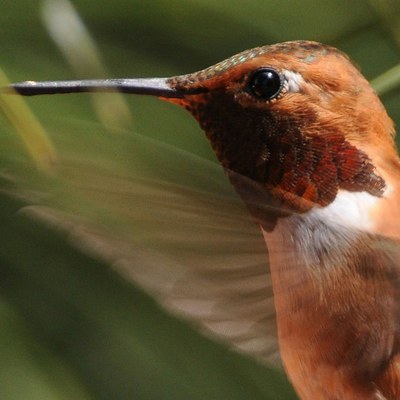
Length: 3.75 inches
Wingspan: 4.5 inches
Habitat: Open woodlands
Unmistakable from other hummingbirds in Central Oregon, the Rufous hummingbird is so named due to the brilliant orange-red feathers that cover the bodies of males. Females have green back feathers with an orange-red central throat. Rufous hummingbirds are recognized as quite feisty! If you have a hummingbird feeder, you've probably noticed they are your most aggressive hummingbird, constantly chasing off others. Rufous hummingbirds breed farther north than any other hummingbird, reaching all the way to Alaska.
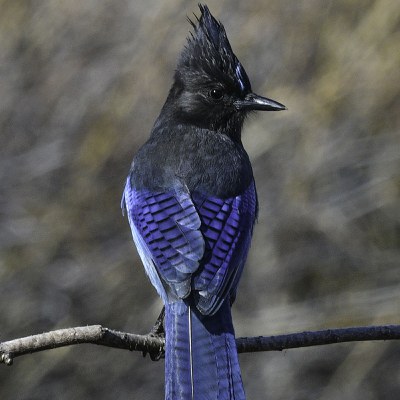
Length: 11 inches
Wingspan: 19 inches
Habitat: Conifer and mixed tree forests
Living in forested mountains and foothills, Steller’s jays have a distinctive triangular crest that often stands up nearly straight from their head. They have a black head and shoulders with bright blue feathers. You can hear their harsh shriek or often spot them just after they’ve stolen food from your picnic table! Similar to others in the jay family, Steller’s jays are intelligent and inquisitive. There are at least 16 subspecies of Steller’s jays in North and Central America!
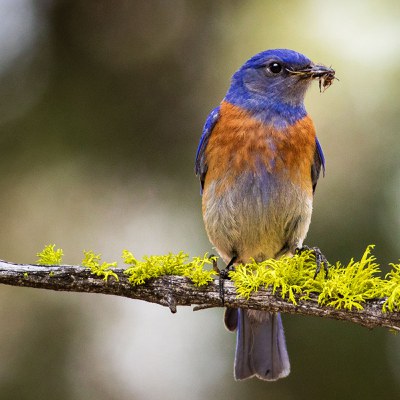
Length: 7 inches
Wingspan: 13.5 inches
Habitat: Open woodlands
These brilliant blue and rust colored birds are a delight to spot! Western bluebirds are incredibly social birds, feeding in flocks during the non-breeding season. They hunt for insects and feed on berries. Western bluebirds utilize a technique called ground-sallying: they fly from a perch and briefly land on the ground to capture an insect or grab a berry before returning to their perch. Western bluebirds nest in tree cavities, but are unable to create their own holes, relying on woodpeckers to create them!
With so many birds living and migrating through Central Oregon, there are a variety of habitats that are critical for helping our bird friends thrive. The Land Trust helps conserve and care for these habitats, from sagebrush flats to open forests to creekside corridors. Thank you for being a part of this work!
Sources: The Cornell Lab of Ornithology and The Sibley Field Guide to Birds of Western North America.
Learn more:


